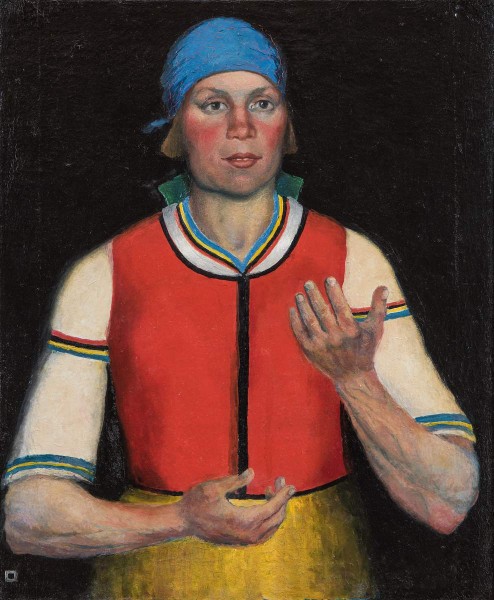The artist is Malevich

Malevich depicts an employee in the Pose of “Prejudice”, the gesture of her hands involuntarily calls associations with the icon -painting canon of the image of the Mother of God. A frank dissonance of the eternal tradition with the task of embodying the image in the spirit of socialist realism makes the “employee” by a work performed by drama and reflecting the spiritual conflict of the author with the reality surrounding him. (ABOUT. Sh.).
Russian portrait. XX century: St. Petersburg, 2001. WITH. 219.
A year before painting in Malevich’s painting, a turning point comes, he returns to the form of a traditional portrait, to the human face as such. Malevich depicts an employee in a pose "present", The gesture of her hands involuntarily causes associations with the icon -painting canon of the image of the Mother of God. A frank dissonance of the eternal tradition with the task of embodying the image in the spirit of socialist realism makes "Employee" a work performed by drama and reflecting the spiritual conflict of the author with the surrounding reality.
In the last years of his life, Malevich worked on several monumental cycles, including the project “Socialist City”. It is possible that the artist was looking for a way in a cycle of picturesque paintings or murals to express a certain universal image of a society consisting of characters of different social layers (workers, peasants, intelligentsia). But, unlike artists who accepted the program of socialist realism, Malevich hoped to stay within the framework of his art worldview and style. It can be assumed that the painting “Worker” of 1933, combining the element of the Suprematism and the traditions of the Italian Renaissance, could be created or as a sketch for the project conceived by the artist or arose as a result of reflection on it. Malevich’s appeal in late works to the traditions of the art of the Renaissance is understandable, since his ideas about creating a picturesque utopia of a certain ideal socialist city sounded in unison with the ideas of Campanella and his “city of the Sun”, then formerly very popular in Soviet Russia.
The upcoming against the background of a black square, frightening its all -consuming abyss, dressed in the clothes of Suprematic flowers, a woman is absolutely static. Neither a hint of movement is felt neither in the production of her figure, nor in the gesture of hands, nor in the gaze. Even the sounds, not having time to be born, die on her half -open lips. All this deprives the heroine of life. Having gained flesh and “picturesque culture on the human face”, but, having lost “great spirituality”, she embarked on the path of universal, mathematically verified, averaged happiness, and her face no longer overshadows the insanity of thought. “Employee” is an image of a person who is reborn by the new time.